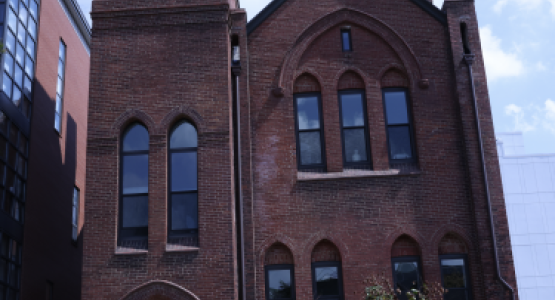
What was the Peoples Church in Washington, D.C.?
Story by Shannon Kelly
‘The People’s Church’ | 2105 Tenth St., NW, Washington, D.C.
Following the split of the Washington church congregation, Adventism’s foremost Black evangelist, Lewis C. Sheafe, preached a series of evangelistic meetings in 1902, held in a tent on 16th and R. Streets, NW. Sheafe empowered Black Adventists in D.C., forming “The People’s Church.” The congregation grew and formally organized itself in December of 1903, purchasing a three-story brick building, originally built in 1896.
Located at 2105 Tenth St., NW in downtown D.C., the church could seat 250 people. The lower floor had space for a printing office and a kitchen for cooking schools. Sheafe was also part of the Niagara Movement, which led to the formation of the NAACP in 1909 and for voting rights.
____________________________________________________________________________________
The original building of the church now sits in a highly gentrified, expensive neighborhood and is home to million-dollar condominiums. The stained glass, once part of the church, is still seen in some of the windows.
Not far from the former “People’s Church” and Freedman’s Hospital, is a spot near Howard University and Georgia Avenue, where Adventist women formed the Committee for the Advancement of Worldwide Work Among Colored Adventists—where they discussed how Black people would have full representation in the Adventist Church. These conversations, combined with Lucy Byard’s story, were the catalysts for the formation of regional conferences.
Dodson’s Bookshop on Georgia Avenue (which has since been torn down) was the first site of the Allegheny Conference.
The Columbia Union Conference—which covers the Mid-Atlantic region of the United States—is home to many locations where people of the Seventh-day Adventist faith made (and continue to make) history. But how did the greater Washington, D.C., area become a church hub in the first place? And where can one find impactful, lesser-known historic sites within the Columbia Union territory?
Take a road trip with historians Michael Campbell, North American Division director of Archives, Statistics, and Research, and Phillip Warfield, a Ph.D. candidate studying United States 20th Century History at Howard University (D.C.), as they introduce—or for some, reintroduce—several interesting and exciting Adventist spots you and your family can visit this summer. So, grab your hiking boots and sunscreen because we’re off!
Find more details and history in our online articles!
- Ellen White Stayed Here in 1905 (Washington, D.C.)
- George Washington Likely Stayed Here (Pine Forge, Pa.)
- Where the Great Controversy Vision Took Place (Bowling Green, Ohio)
- First Adventist Church in Washington, D.C.
- What Was The People's Church? (Washington, D.C.)
- Where Is the Oldest Adventist Building Still in Use? (Ford, Va.)
- Where the Great Controversy Vision Took Place (Bowling Green, Ohio)
- What Happened to Lucy Byard (And Why is it Important to Adventism?)
- Which Adventists are Buried in Rock Creek Cemetery? (Washington, D.C.)
- Why Did the General Conference Move to Takoma Park?

Add new comment